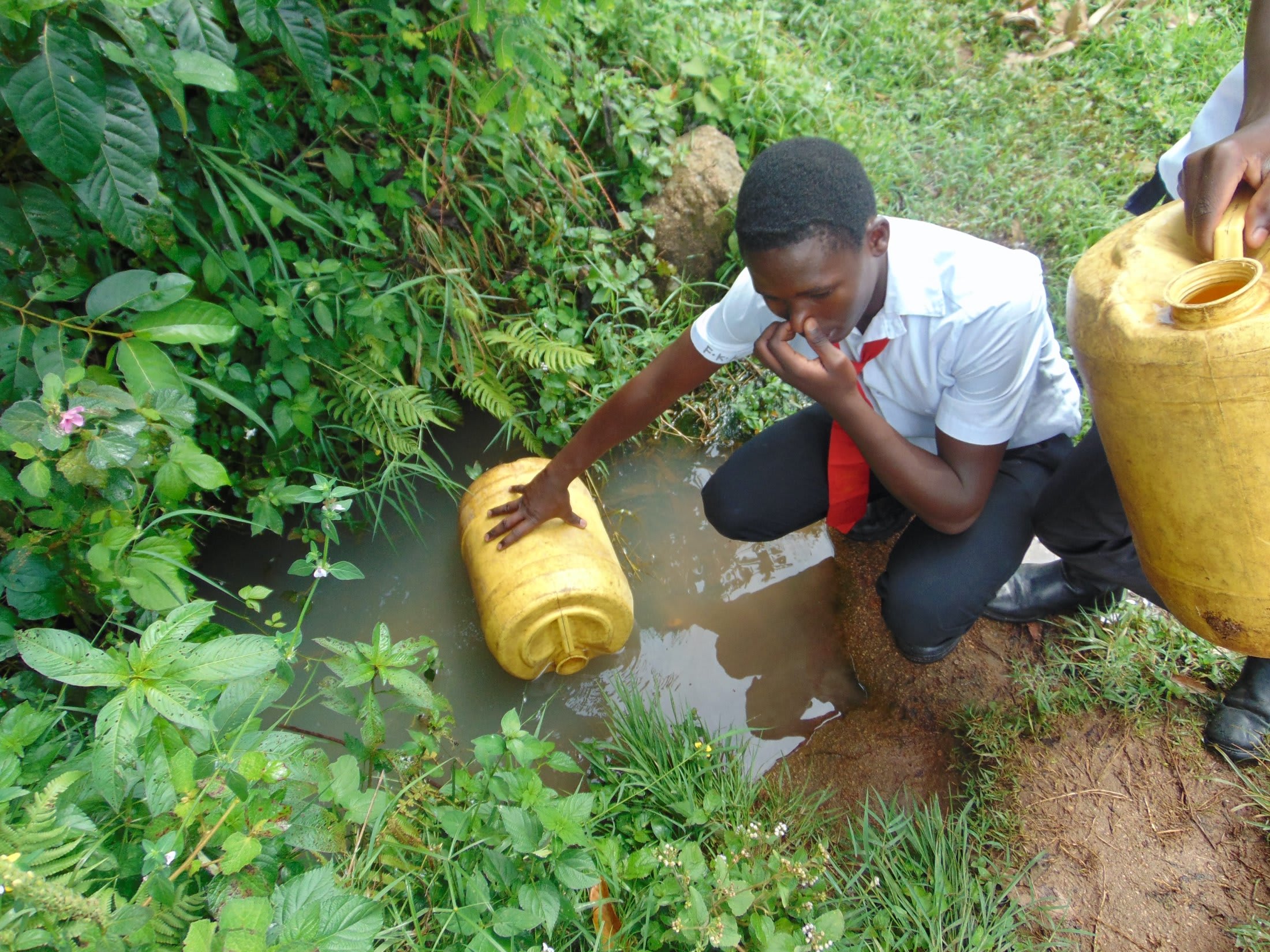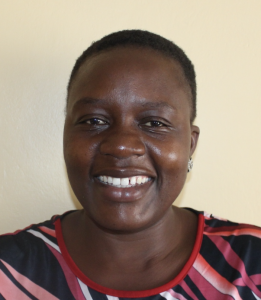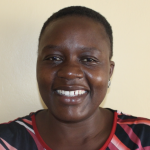"My name is Melvin and I am a Form 3 student at Friends Mixed Secondary School Lwombei. My journey of education has not been an easy one here. Getting water each morning almost cost me one day when I was almost assaulted as I went downstream to get water from the river that is surrounded by dense vegetation," she told us during a recent visit to the school.
"I will be so happy to see our school having clean and safe water on the compound next year. This will enable me to attend my morning preps on time and I am confident of scoring the highest mean score and joining my dream college in the country that produces engineers, doctors, and teachers."
Melvin is just 18 years old, but her story is much older than that. Wherever there are water shortages in the world, girls and women are most impacted as they are typically the ones sent to fetch it. Students and staff at Friends Mixed Secondary School Lwombei agree that of all students, the girls are most at risk every day when they have to fetch water before school in the dark. But for the girls, their options are to either risk their safety or go without water. The choice is hardly a fair one.
Established in 2007, this school has never been able to secure enough safe and clean water for its students. Today, there are 306 students taught and supported by 23 teachers and staff.
Another Form 3 student named Roselyne explained what the water crisis at school means for girls like herself and Melvin:
"We are expected to be in school by 6:30 am for the morning preps. I wake up as early as 4:00 am to study and complete any school assignments. By 5:00 am, I go to take a shower, sweep our house, and I make breakfast for everyone. Then I get to take my own breakfast and by 6:00 am at the latest I have to be out of the house."
"I then take my school bag in one hand and a water container in the other and start on my way to school. I pass through a stream on the way to school and fetch water. At that moment it is still dark and it scares me going downstream alone. As I arrive in school, I proceed to class for morning preps for 1 hour. Anyone who does not come in with water is sent back and this means that they miss the morning preps."
All this work and stress, and it is only 7:30 am at Friends Mixed Secondary School Lwombei. Teachers confirmed that their morning lessons have been ineffective as most students come in very late and by mid-morning, most students are very tired and lose concentration. This is a big concern if it goes on, they said, because it may affect their pupils' performance in the national examinations which give them hope of attending college.
The school predominantly relies on the water students bring from home, collected from sources ranging from muddy puddles to smelly, unprotected springs and streams. We saw one student holding his nose at one source it smelled so bad.

There is a standpipe that was put in at the neighboring primary school, but the water is supplied by gravity and thus the school does not usually get water since it is located on higher ground than the source. The school is uncertain if the pipe will ever actually give water.
"It's not been an easy thing, managing a school without water. We normally have a school feeding program for tea breaks and lunch and it requires water, as does the cleaning of the toilets and classrooms. Without water, all of these things suffer," said Principal Henry Okare Amoke.
"It is every principal's dream to see their school excel in the national examinations, but it has not been an easy journey for me. Parents feel I am not doing enough to improve our performance. Little do they know that other factors and lack of necessary amenities also affect performance. I can't wait to have the project done in my school next year. I even wish it was yesterday. We are ready to contribute whatever is needed from our end."
There are currently no methods of water treatment for the combined water that students collect, and Principal Amoke reported that drinking this water has long been a health issue for his school. Cases of absenteeism are experienced almost every day with students and staff typically reporting issues of stomachaches, headaches, and coughing.
What We Can Do:
Rain Tank
A 75,000-liter rainwater catchment tank will help alleviate the water crisis at this school. The school will help collect the needed construction materials such as sand, bricks, rocks, and water for mixing cement. We will complement their materials by providing an expert team of artisans, tools, hardware, and the guttering system. Once finished, this tank will begin catching rainfall that will be used by the school’s students and staff for drinking, handwashing, cooking, cleaning, and much more.
We and the school strongly believe that all of these components will work together to improve standards at this school, which will help lead to better student academic performance and will help to unlock the potential for these students to live better, healthier lives.
Handwashing Stations
There is currently nowhere for students to wash their hands after using the latrines or before eating lunch, let alone the water to do so.
The student health club will oversee the 2 new handwashing stations we will provide, and make sure they are kept clean and in working condition. The club leaders will fill the handwashing stations with water daily and make sure they are always supplied with a cleaning agent such as soap or ash.
VIP Latrines
We will construct 2 triple-door latrine blocks using local materials that the school will help gather. 3 doors will serve the girls while the other 3 will serve the boys. All of these new latrines will have cement floors that are designed to be easy to use and to clean. And with a rain tank right on school property, there should be enough water to keep them clean.
Training on Health, Hygiene, COVID-19, and More
We will hold a 1-day intensive training session with students, teachers, and parents. This training will cover a wide range of topics including COVID-19 symptoms, transmission routes, and prevention; personal and environmental hygiene; and the operation and maintenance of the rain tank, latrines, and handwashing stations. There will be a special emphasis on handwashing.
Our team of facilitators will use a variety of methods to train, including participatory hygiene and sanitation transformation, and asset-based community development. We will initiate a student health club, which will prepare students to lead other pupils into healthy habits at school and at home. We will also lead lectures, group discussions, and provide illustrative handouts to teach health topics and ways to promote good hygiene practices within the school including handwashing and water treatment. We will then conduct a series of follow-up trainings before transitioning to our regularly scheduled support visits throughout the year.

 Rainwater Catchment
Rainwater Catchment
 Rehabilitation Project
Rehabilitation Project


















































